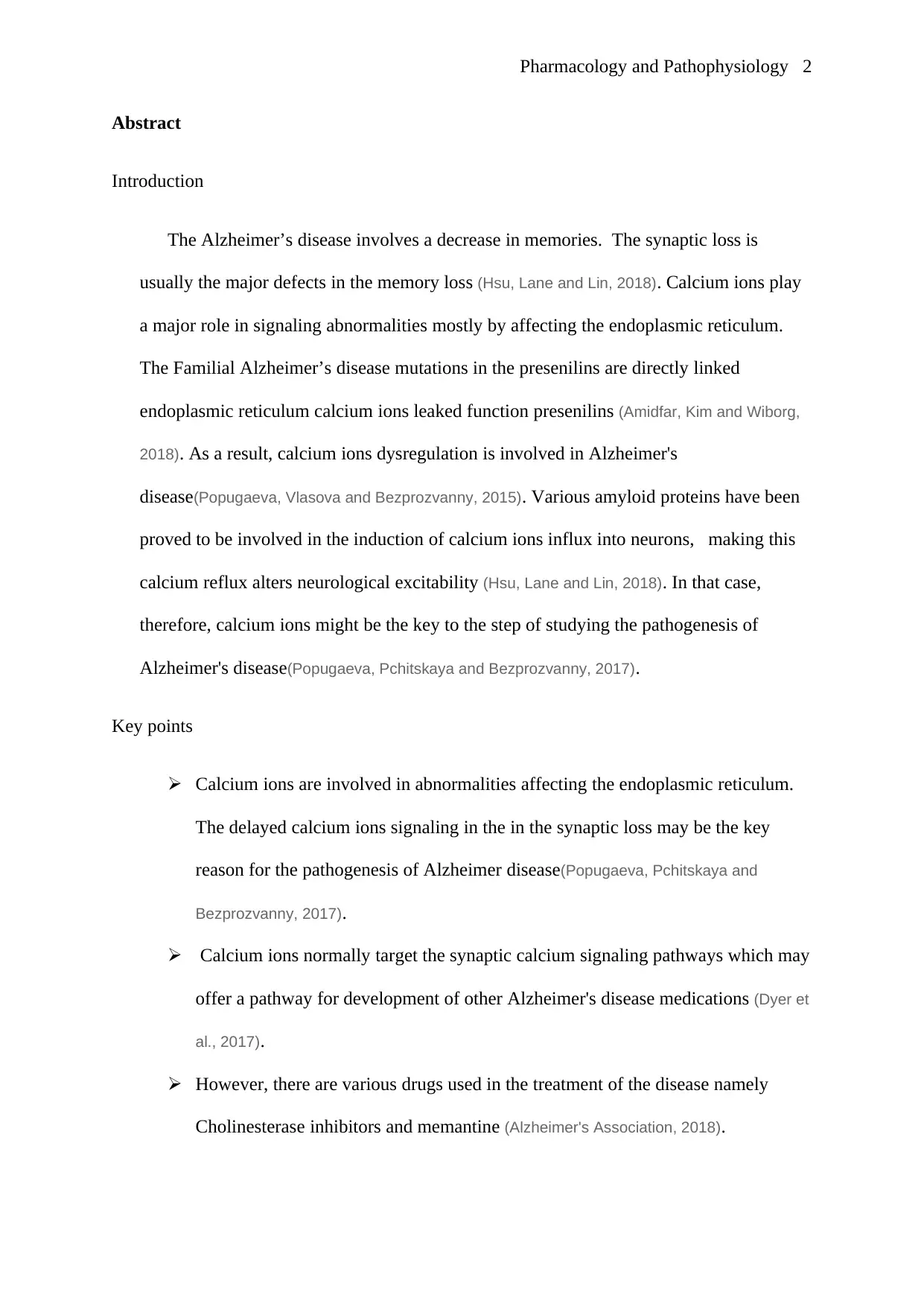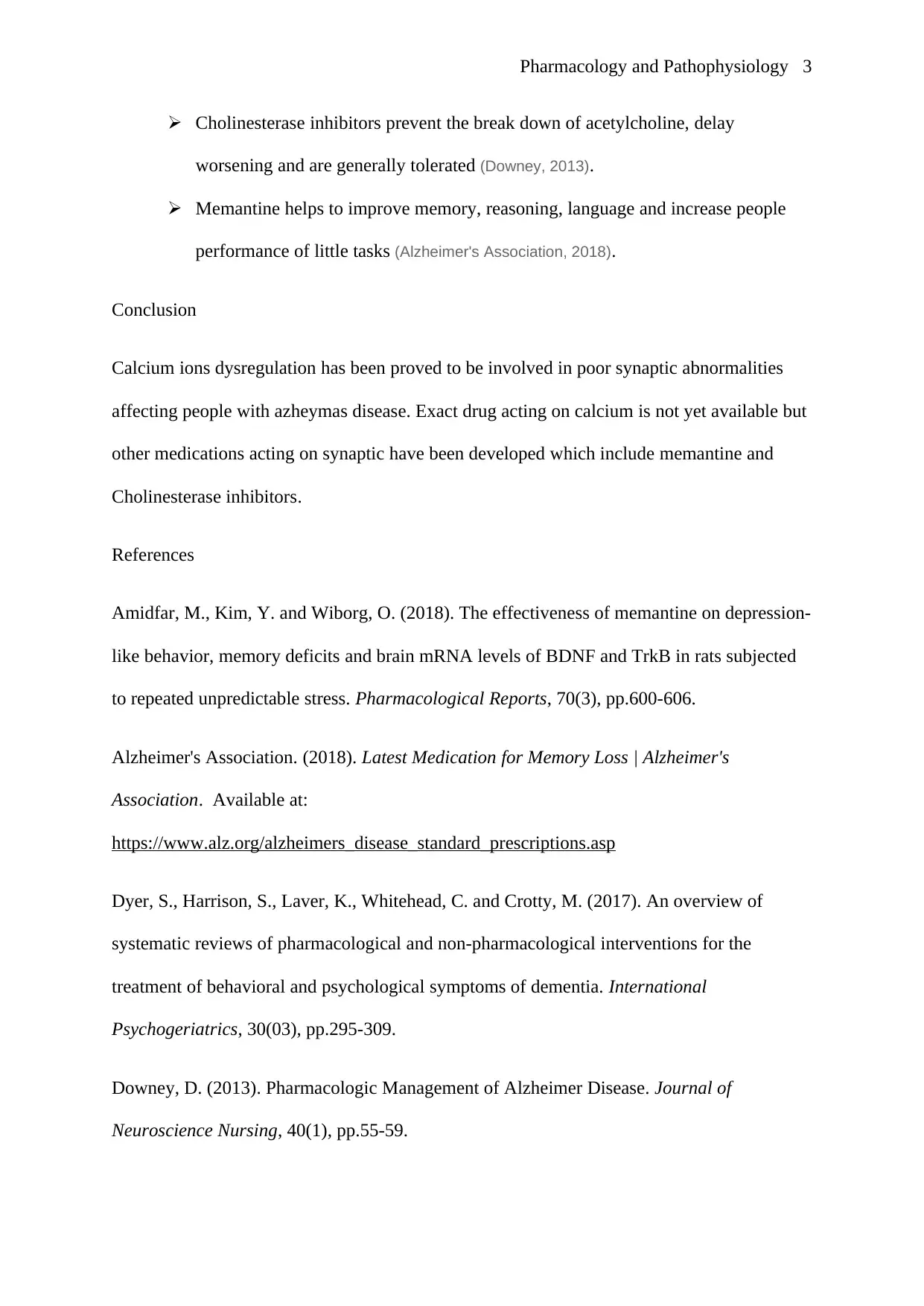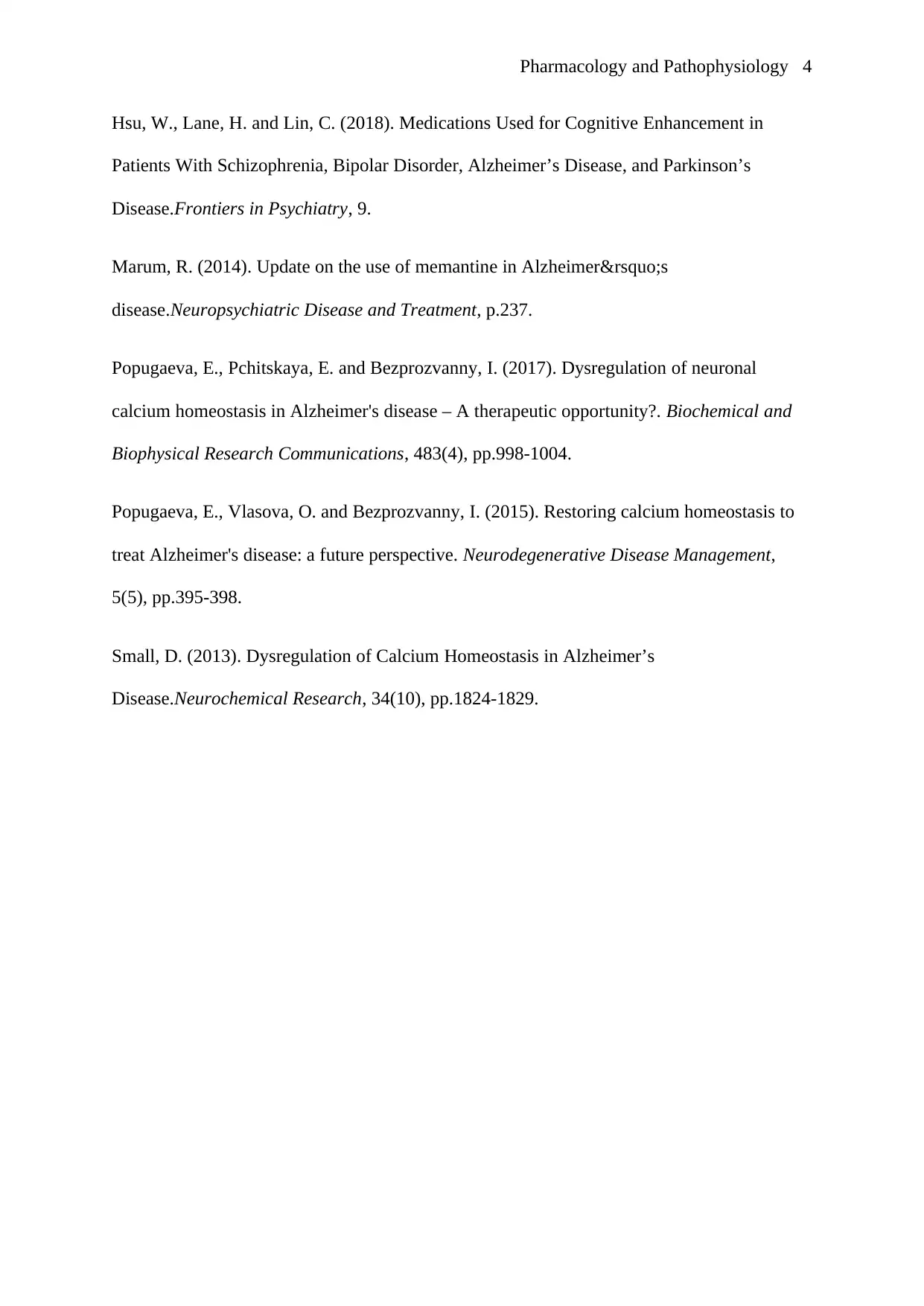Pharmacology and Pathophysiology: Calcium Ions in Alzheimer's Disease
VerifiedAdded on 2021/05/31
|4
|716
|49
Report
AI Summary
This report delves into the intricate relationship between calcium ions and Alzheimer's disease, highlighting their impact on memory loss and synaptic abnormalities. It explores how calcium dysregulation, particularly in the endoplasmic reticulum, contributes to the disease's pathogenesis. The report discusses the involvement of various amyloid proteins in inducing calcium influx into neurons, which alters neurological excitability. Furthermore, it examines potential therapeutic interventions, including cholinesterase inhibitors and memantine, which are used to manage the symptoms of Alzheimer's disease. The conclusion emphasizes that while the exact drugs targeting calcium dysregulation are not yet available, other medications acting on synaptic function are currently used in the treatment of Alzheimer's disease.
1 out of 4







![[object Object]](/_next/static/media/star-bottom.7253800d.svg)